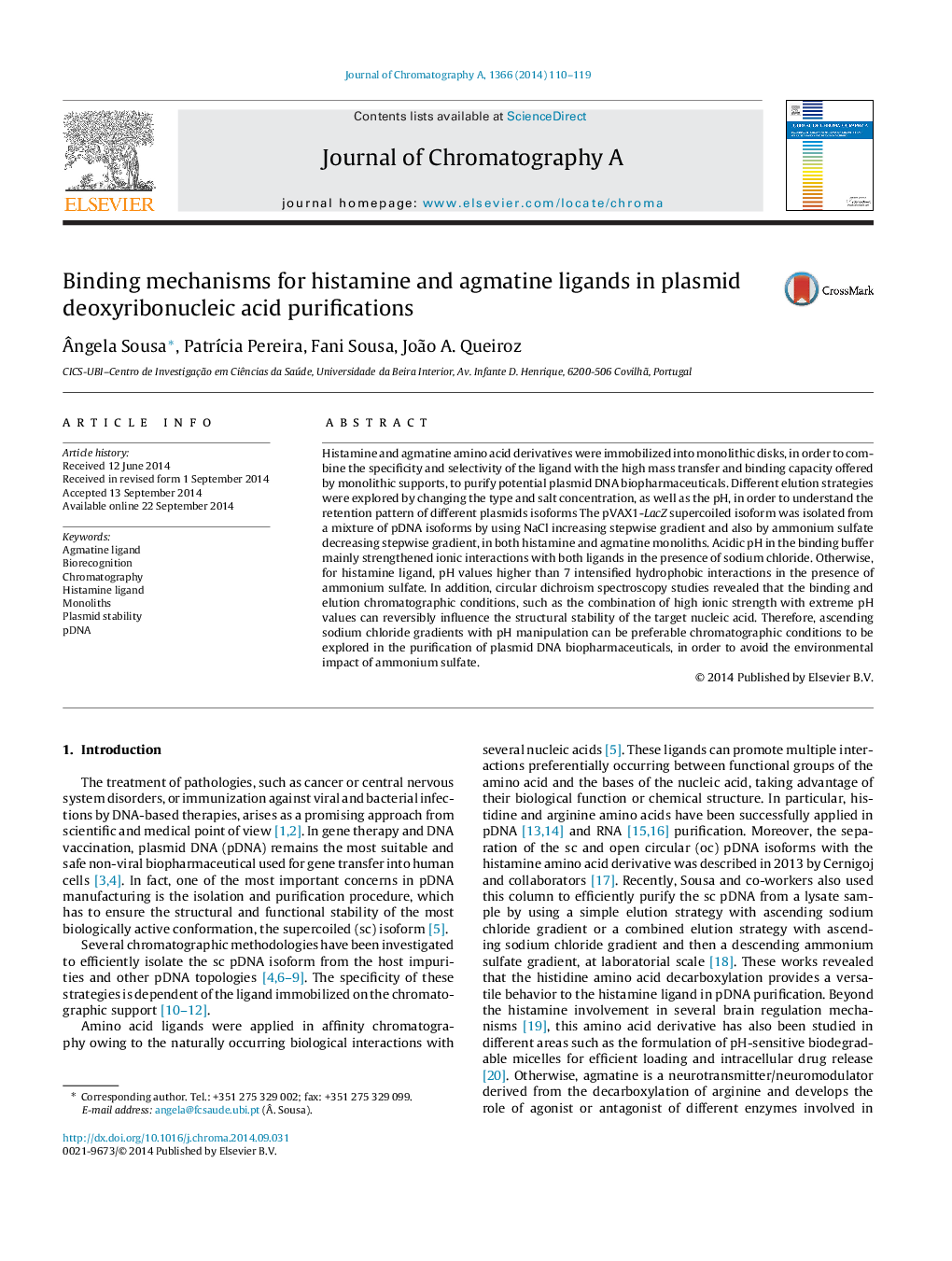| Article ID | Journal | Published Year | Pages | File Type |
|---|---|---|---|---|
| 1199138 | Journal of Chromatography A | 2014 | 10 Pages |
•The versatility of histamine and agmatine ligands in function of binding and elution conditions.•Histamine and agmatine-pDNA multiple interactions depend of salts, ionic strength and pH.•Both ligands showed a biorecognition to the sc pDNA isoform.•The binding and elution conditions affect the pDNA structural stability.
Histamine and agmatine amino acid derivatives were immobilized into monolithic disks, in order to combine the specificity and selectivity of the ligand with the high mass transfer and binding capacity offered by monolithic supports, to purify potential plasmid DNA biopharmaceuticals. Different elution strategies were explored by changing the type and salt concentration, as well as the pH, in order to understand the retention pattern of different plasmids isoforms The pVAX1-LacZ supercoiled isoform was isolated from a mixture of pDNA isoforms by using NaCl increasing stepwise gradient and also by ammonium sulfate decreasing stepwise gradient, in both histamine and agmatine monoliths. Acidic pH in the binding buffer mainly strengthened ionic interactions with both ligands in the presence of sodium chloride. Otherwise, for histamine ligand, pH values higher than 7 intensified hydrophobic interactions in the presence of ammonium sulfate. In addition, circular dichroism spectroscopy studies revealed that the binding and elution chromatographic conditions, such as the combination of high ionic strength with extreme pH values can reversibly influence the structural stability of the target nucleic acid. Therefore, ascending sodium chloride gradients with pH manipulation can be preferable chromatographic conditions to be explored in the purification of plasmid DNA biopharmaceuticals, in order to avoid the environmental impact of ammonium sulfate.
